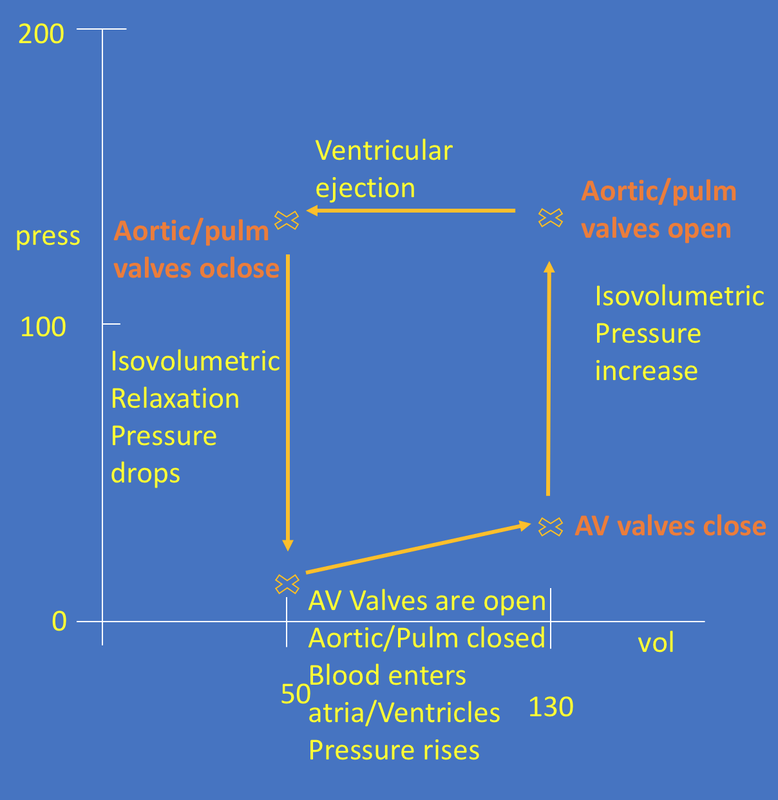PHYSIOLOGY MCQ SAMPLE PAGE
High quality MCQs are the cornerstone of good preparation for this exam.
We have over 2500 MCQs to do on this website, with more being added regularly.
You will also have access to a random MCQ generator. Each time you try the MCQs, you get a different test generated.
You get answers at the end go the quiz to help you prepare, learn and pass.
We have over 2500 MCQs to do on this website, with more being added regularly.
You will also have access to a random MCQ generator. Each time you try the MCQs, you get a different test generated.
You get answers at the end go the quiz to help you prepare, learn and pass.
Try these MCQs
MCQ 1 DURING The Isovolumetric Relaxation Phase of the Pressure Volume Loop
(a) The intraventricular pressure drops by about 20mmHg
(b) The intraventricular pressure remains constant
(c) Occurs during passive ventricular filling
(d) Occurs in diastole
(e) Ends when the atrioventricular valves open
(b) The intraventricular pressure remains constant
(c) Occurs during passive ventricular filling
(d) Occurs in diastole
(e) Ends when the atrioventricular valves open
MCQ 2 With respect to the Cardiac cycle:
(a) The 3rd heart sound is associated with ventricular filling
(b) The end-diastolic ventricular volume is 190mL
(c) Isovolumetric relaxation occurs following closure of the atrioventricular valves
(d) Right ventricular contraction occurs before left
(e) During isovolumetric contraction atrial pressure rises
(b) The end-diastolic ventricular volume is 190mL
(c) Isovolumetric relaxation occurs following closure of the atrioventricular valves
(d) Right ventricular contraction occurs before left
(e) During isovolumetric contraction atrial pressure rises
ANSWER
E
MCQ 3 I NTERMS OF THE CARDIAC ACTION POTENTIAL
(a) Rapid depolarisation occurs in phase 1
(b) Phase 2 represents a slow repolarisation
(c) Phase 0 is associated with Ca influx
(d) Phase 3 is associated with slow repolarisation
(e) Myocardial fibres have a resting action potential of -60mV
(b) Phase 2 represents a slow repolarisation
(c) Phase 0 is associated with Ca influx
(d) Phase 3 is associated with slow repolarisation
(e) Myocardial fibres have a resting action potential of -60mV
MCQ 4 Which of the following is the result of an inward sodium current?
(a) Repolarisation of the action potential in the SA node
(b) Upstroke of the action potential in Purkinje fibres
(c) Plateau of the action potential in atrial muscle
(d) Repolarisation of the action potential in ventricular muscle
(e) Repolarisation of the action potential in the AV node
(b) Upstroke of the action potential in Purkinje fibres
(c) Plateau of the action potential in atrial muscle
(d) Repolarisation of the action potential in ventricular muscle
(e) Repolarisation of the action potential in the AV node
ANSWER
B
MCQ5 Regarding the jugular venous pulse
(a) A "V" wave mirrors the rise in atrial pressure before the tricuspid valve closes
(b) "a" wave is due to atrial diastole
(c) Venous pressure increases during inspiration
(d) "c" wave occurs during isovolumetric ventricular contraction
(e) Giant "v" waves may indicate incomplete heart block
(b) "a" wave is due to atrial diastole
(c) Venous pressure increases during inspiration
(d) "c" wave occurs during isovolumetric ventricular contraction
(e) Giant "v" waves may indicate incomplete heart block
ANSWER
D

